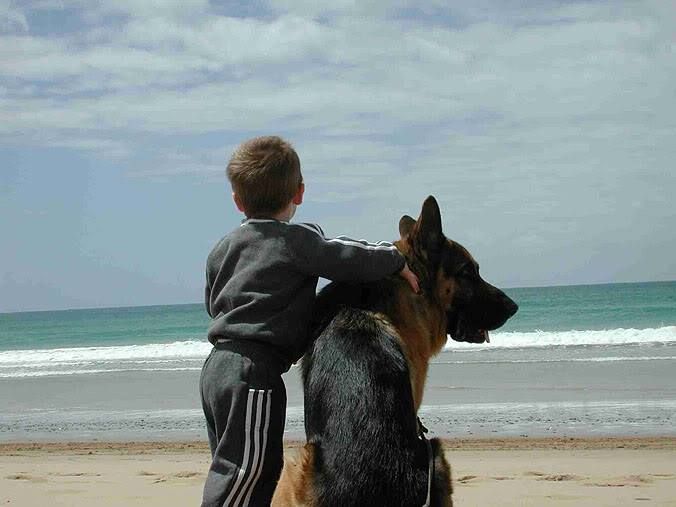preventing separation anxiety in puppies

The term “separation anxiety” is sometimes overused, applied to any dog that barks, chews or eliminates indoors while alone. It takes some investigation to find out whether the dog truly has SA or simply needs more management and training. True “separation anxiety” describes dogs who panic when left alone and stay panicked until their people return. They may eliminate inside their crate, chew or dig destructively (especially around doors and windows), bark or howl constantly, or even injure themselves trying to escape their crate or house. It is a serious problem that is much easier to prevent than to treat, so prevention is where the puppy owner should start.
Teach your puppy to feel comfortable in a crate. Let her run in and out of it for treats, leaving the door open. Repeat this exercise several times during the day, shutting the door (with puppy inside) in gradually increasing increments: two seconds, five seconds, fifteen seconds, etc. Give your pup toys or treats to chew on while you do this to prevent her from becoming fearful and setting both of you back. If you play this “game” once an hour and put your pup in when she’s napping, you’ll go a long way to helping her love her crate. Once she’s comfortable there for longer periods, give her a stuffed Kong or a chew bone to work on, and return before she’s finished, quietly greet her and take away the toy/bone: she’ll go from “Let me out!” to “Darn it, I’m not done!” Keep this up, gradually increasing the amount of time she’s alone in the crate. If she does start barking or howling, do not open the door until she’s quiet: this will only teach her that noise makes you come back. Aim for a shorter period of time during your next session.
Teach your puppy to be alone. This may sound silly, and to some people, unnecessary. Some owners are retired, others work from home, still others are at home raising children, and may not see the need for such training. Failing to do so, however, results in a dog who cannot handle being by himself, setting the stage for devastating separation anxiety. Make time in your day for the puppy to be alone, either in his crate or in a puppy-proofed area if a crate is not available.
Keep greetings and departures low-key. Highly emotional comings and goings tend to ramp up a dog’s arousal level, which – over time – can make it harder for him to be left alone. Owners who are anxious or emotional about leaving might unintentionally transmit that tension to their dogs, so keep hellos and goodbyes simple and calm. Some owners simply leave without saying goodbye at all.
Help your puppy associate your departure cues with good things. Think of the things you typically do before you leave: putting on your coat, jingling your keys, picking up your bag or briefcase, and so on. First, start doing these activities when you are not leaving, give your puppy something she loves (a stuffed Kong, a favorite toy, etc.) and put her in her crate. Wait a short time and take her out before she’s finished with her treat. The idea is to teach her to associate the signs of your departure with feeling good. Some owners save special, high-value toys and treats for alone-time to help this process along.
Follow a “Nothing in Life is Free” protocol. Leadership exercises such as this aren’t a cure for SA, but they do prevent frustration intolerance in young dogs and teach them delayed gratification. It is important for puppies to learn they cannot always get what they want, and that they must “earn” the things they do want. Ask your pup to sit before being fed, going out to play, even being petted. Do not give valued resources like food, toys, attention and exercise for free just because he’s cute!
Make sure your pup has plenty of exercise. Appropriate exercise depends on the age of your puppy, but free play with other puppies, gentle fetch games and short walks can all burn off excess energy. No jumping or forced exercise (long walks or running on leash), as these kinds of activities can cause permanent injury if started too soon. Keep exercise sessions short and allow the puppy plenty of rest periods.
You might be thinking, “I have to do all this in addition to housetraining, working and raising the kids??” The answer is yes. The good news is that putting in this effort when your dog is a puppy will save you heartache, frustration and costly repairs when he is older. As with many behavioral problems, it is much easier to prevent than to cure. (If your dog develops SA symptoms despite these guidelines, we recommend contacting a veterinary behaviorist for management and treatment.)
https://www.animalhumanesociety.org/training/ill-be-back-really-preventing-separation-anxiety
Sources: I’ll Be Home Soon! How to Prevent and Treat Separation Anxiety (Patricia McConnell, Ph.D), For the Love of a Dog (Patricia McConnell, Ph.D.).

